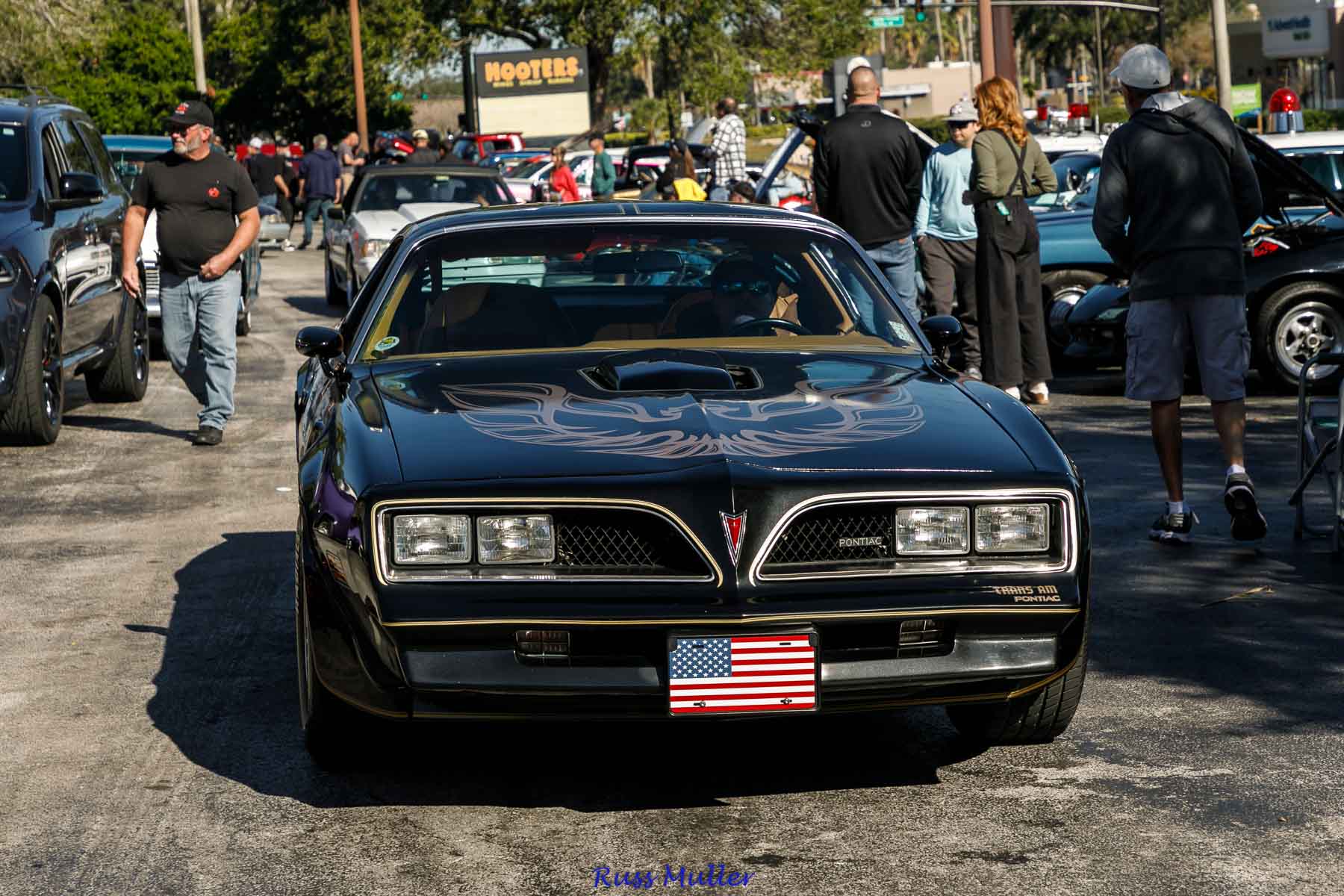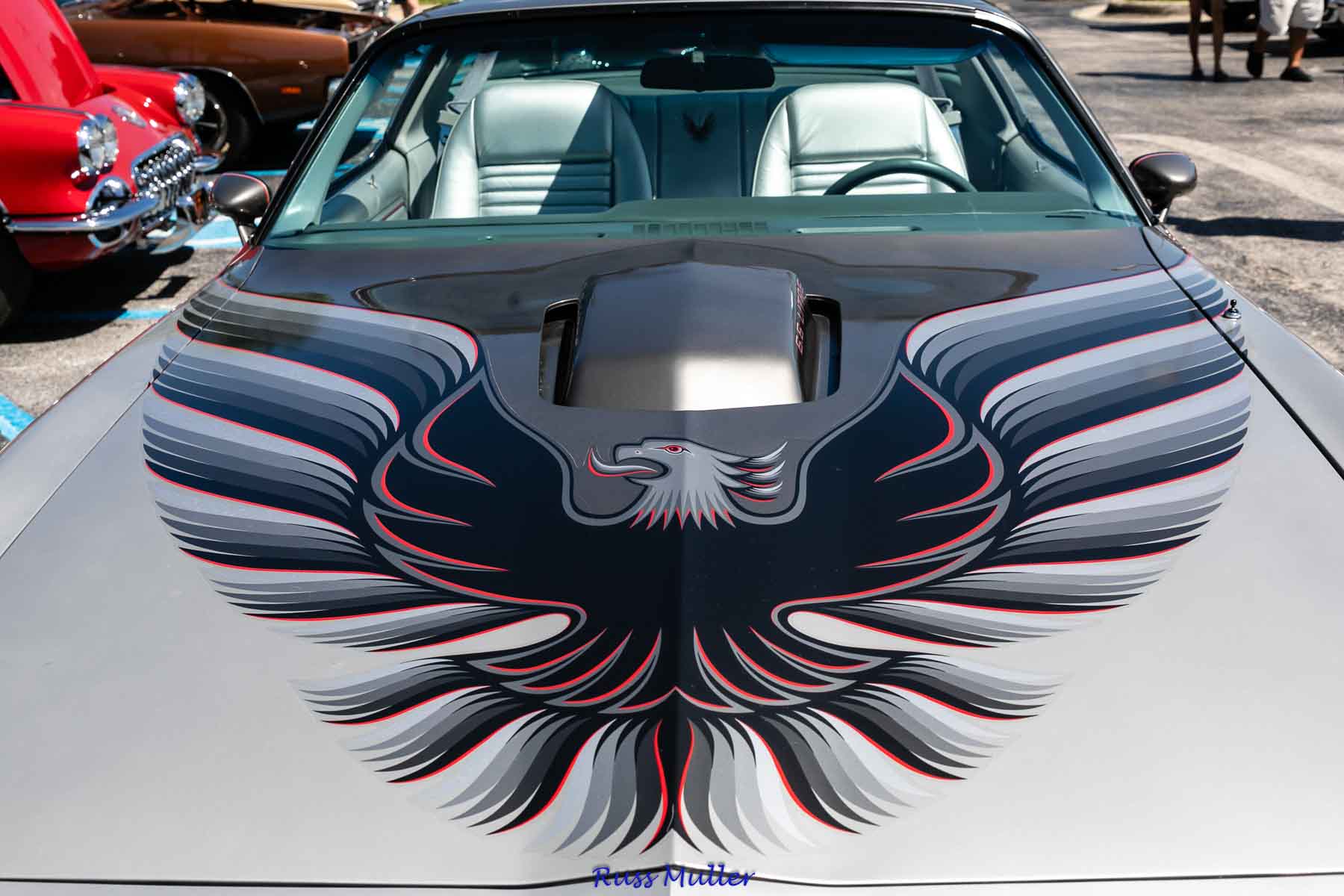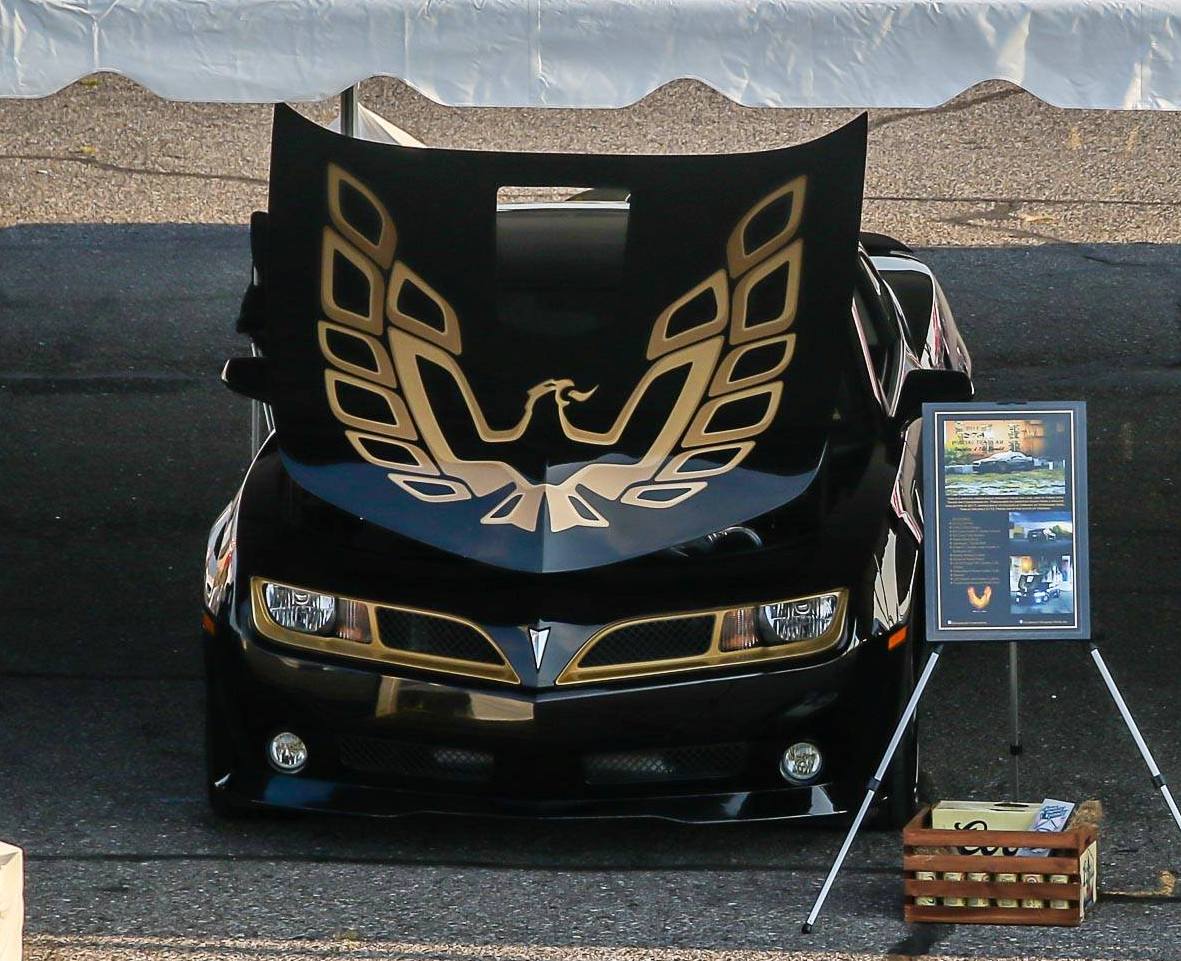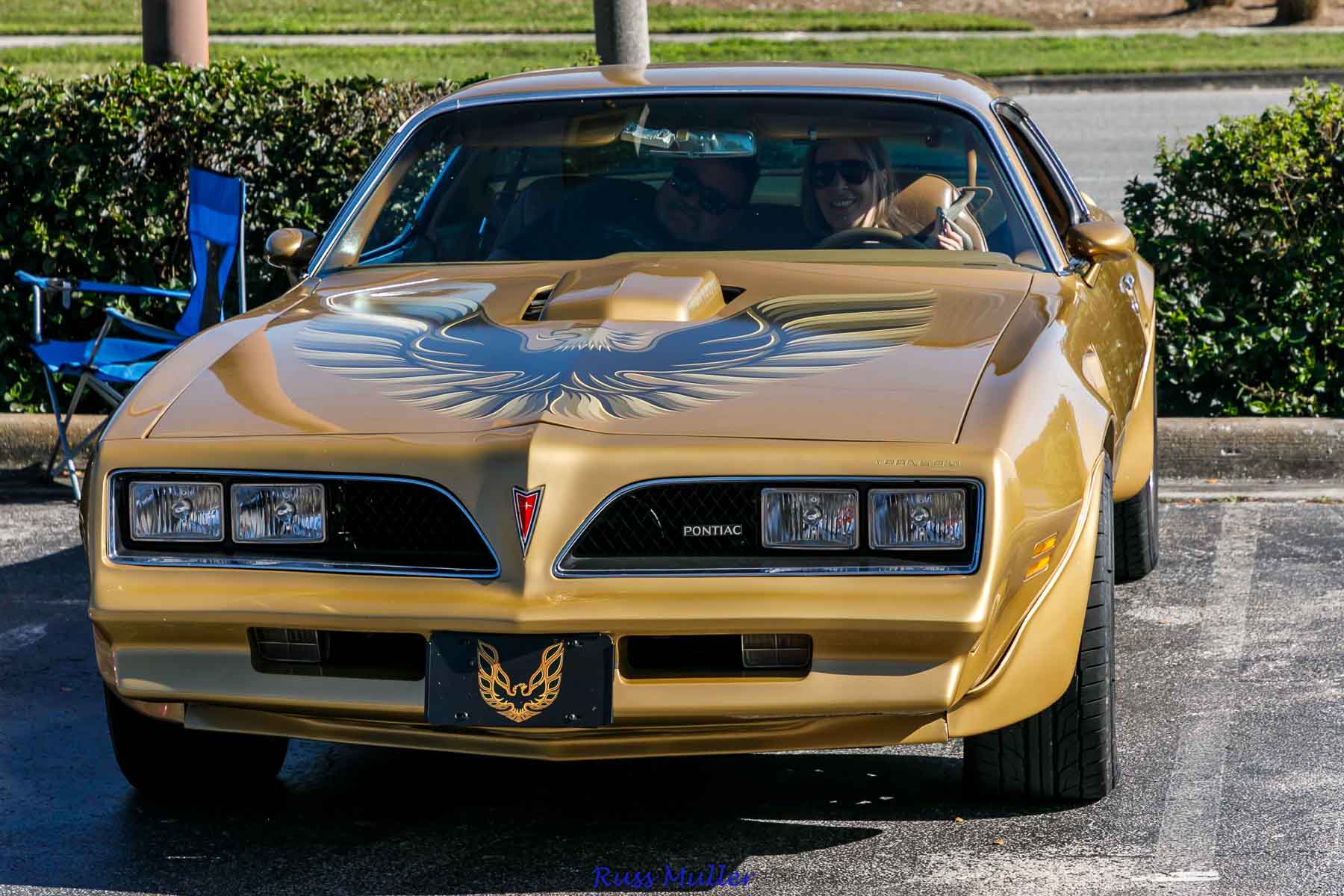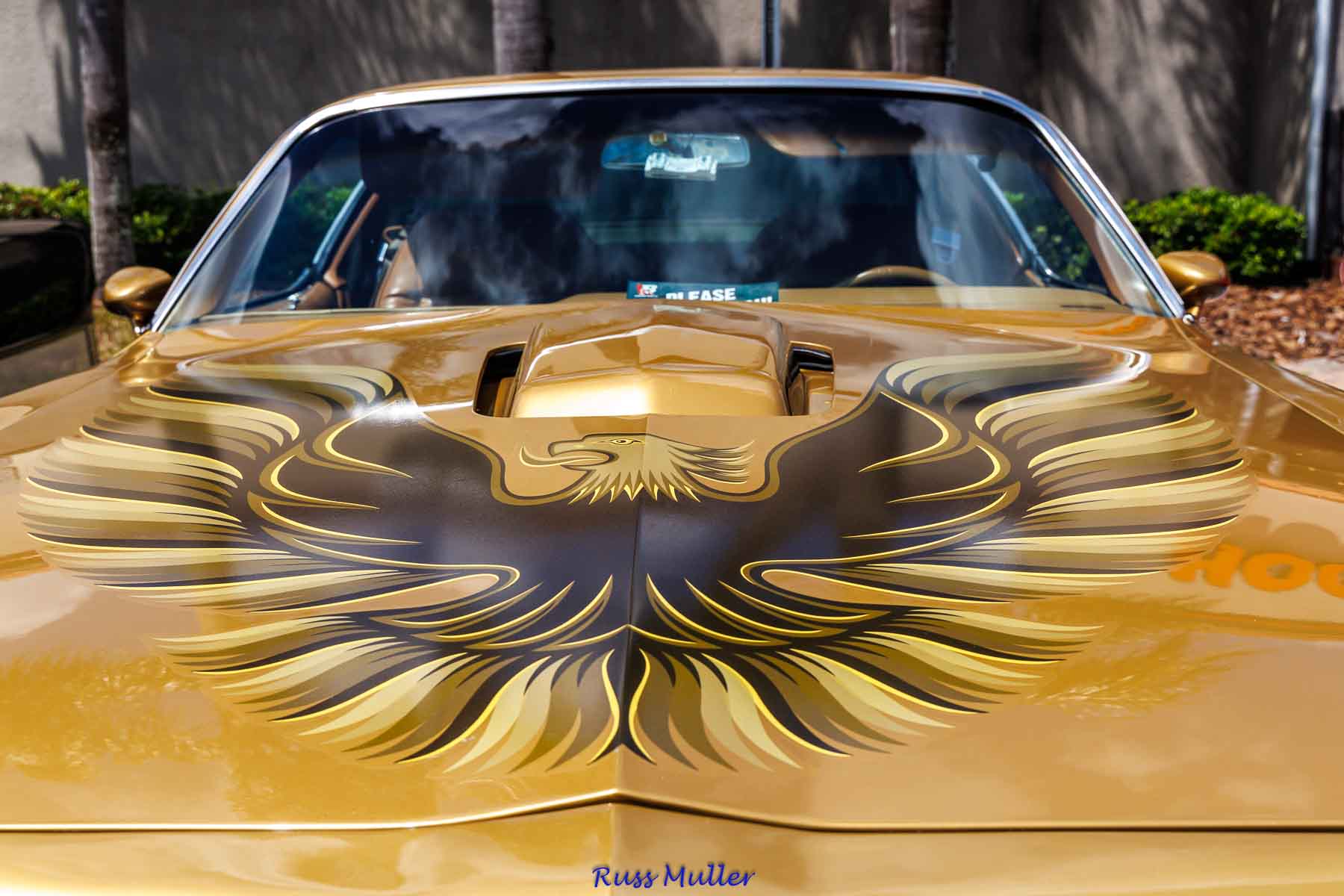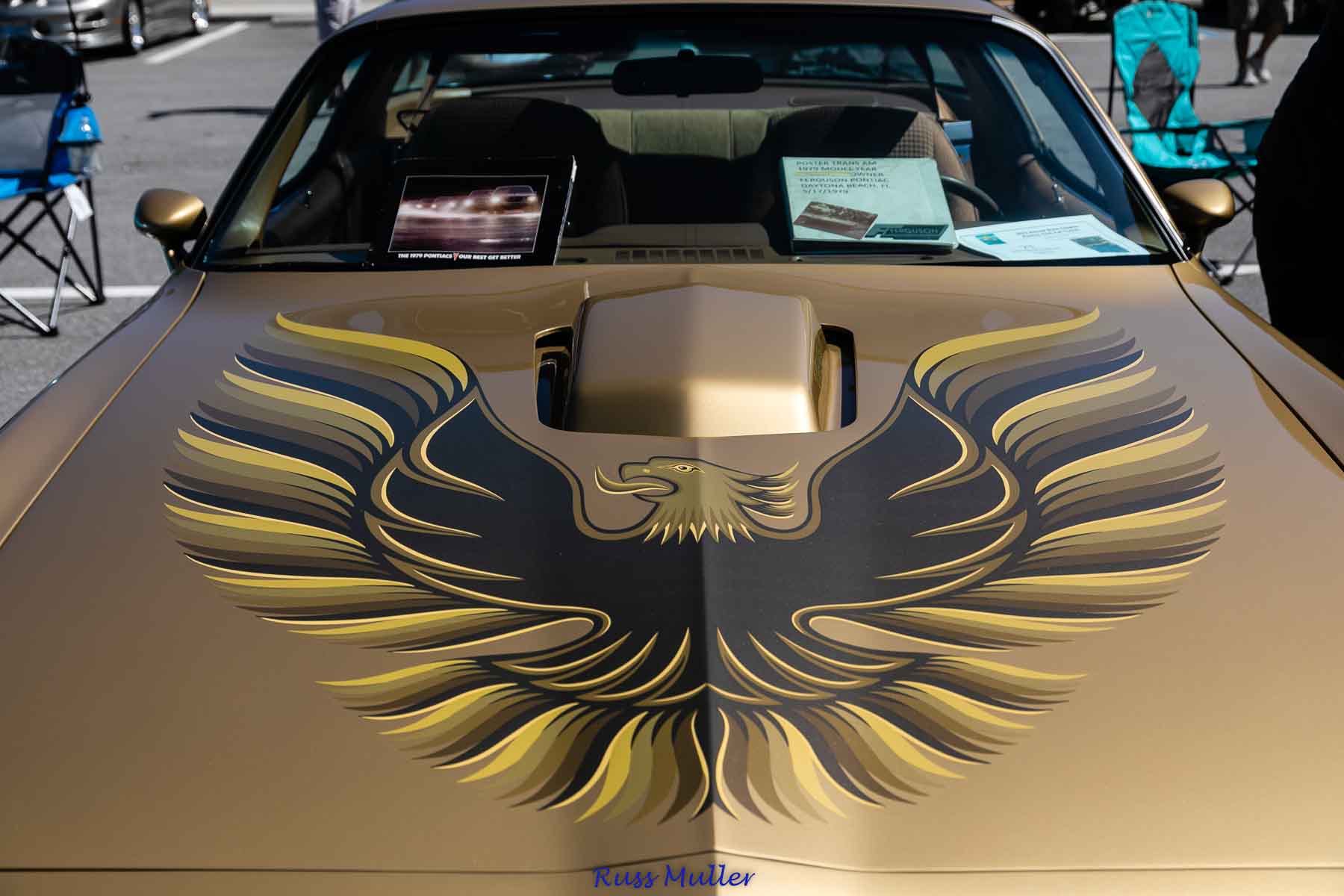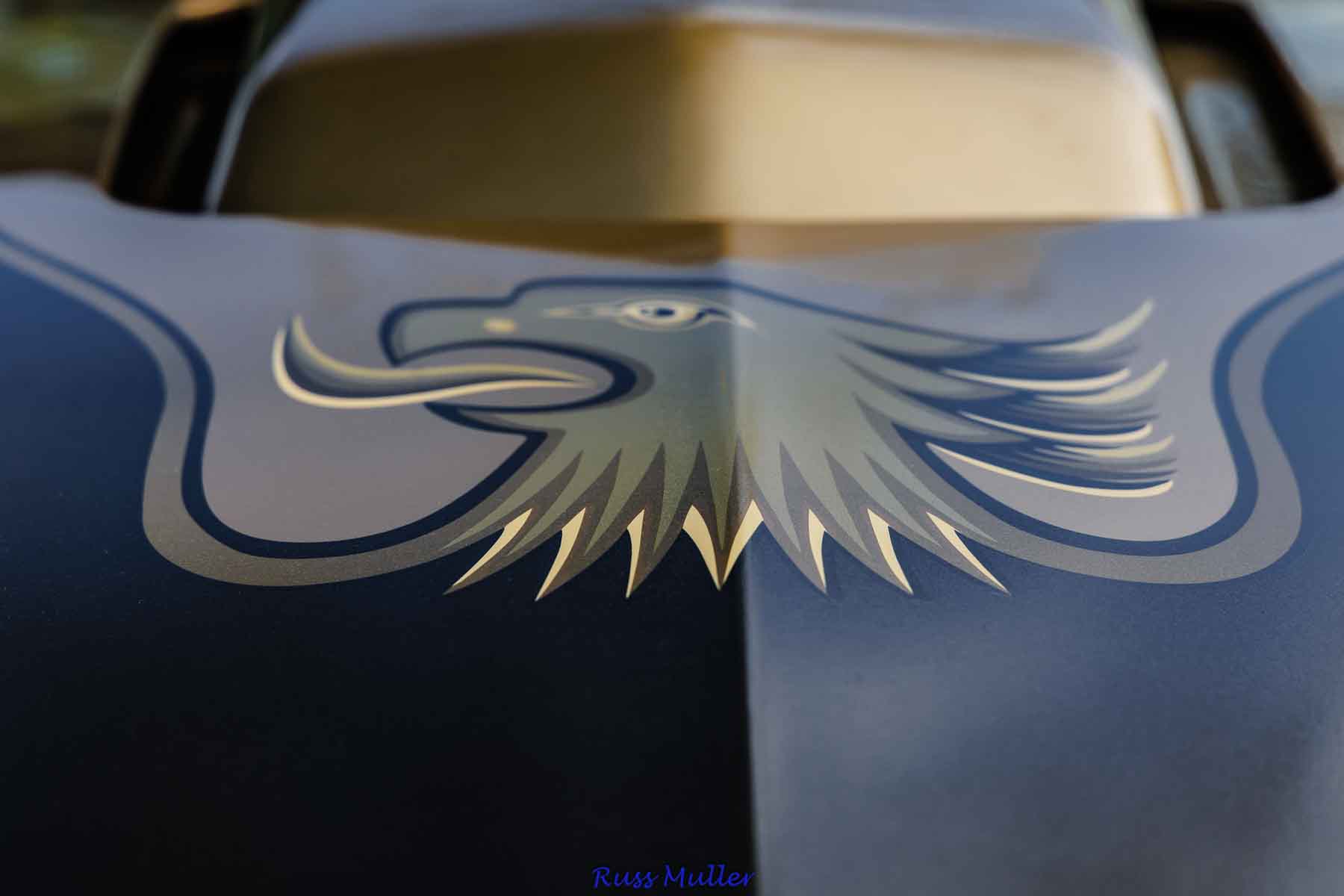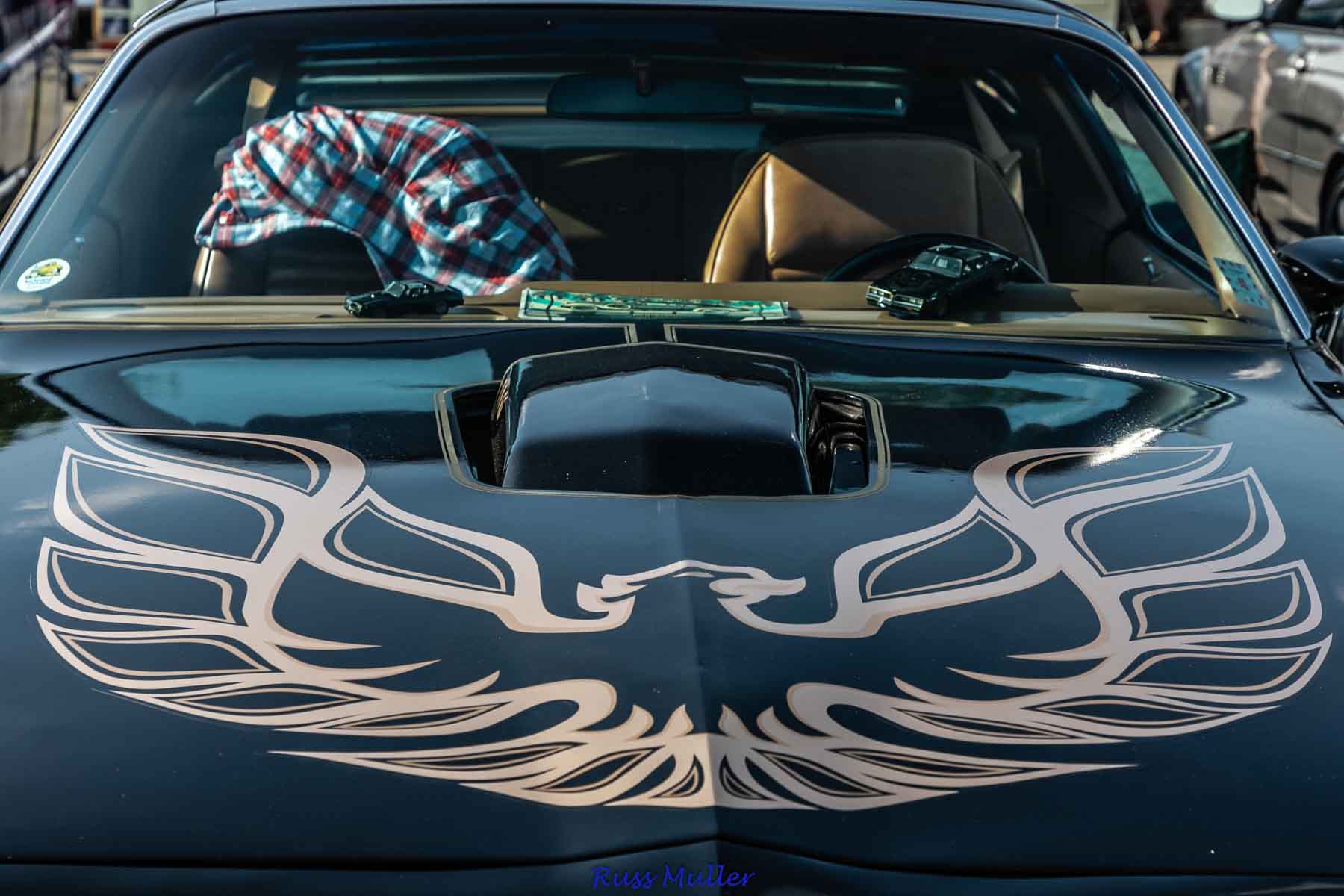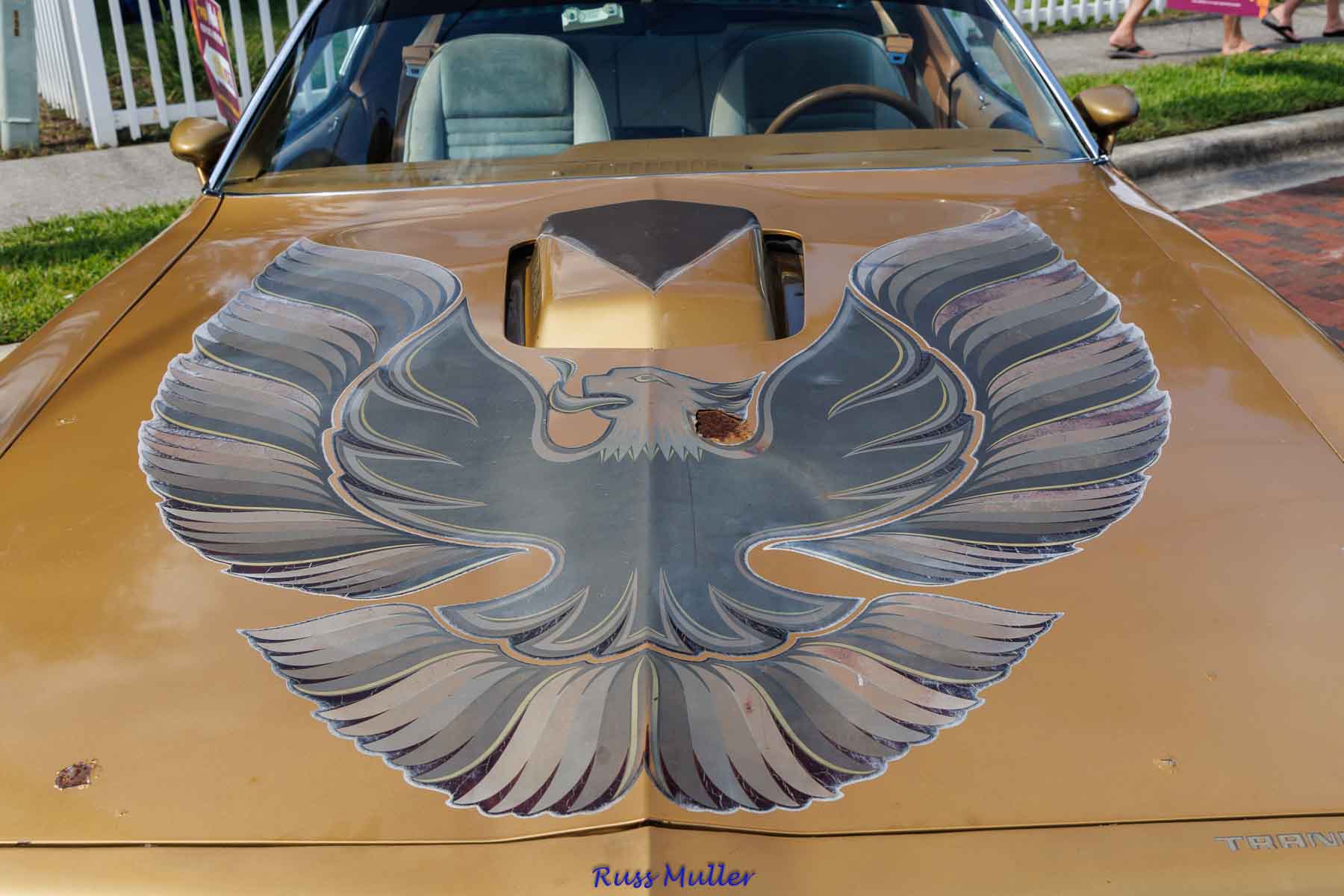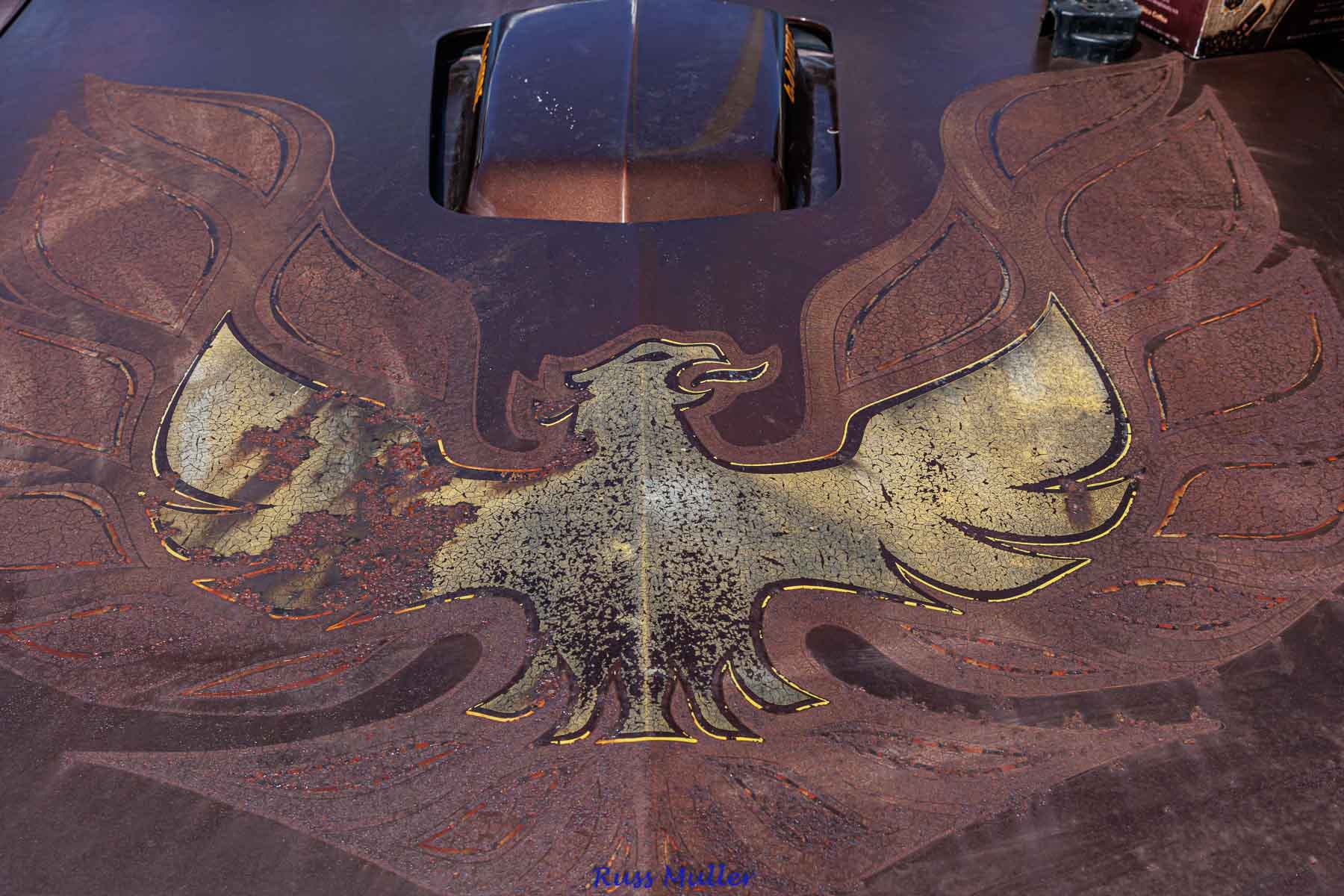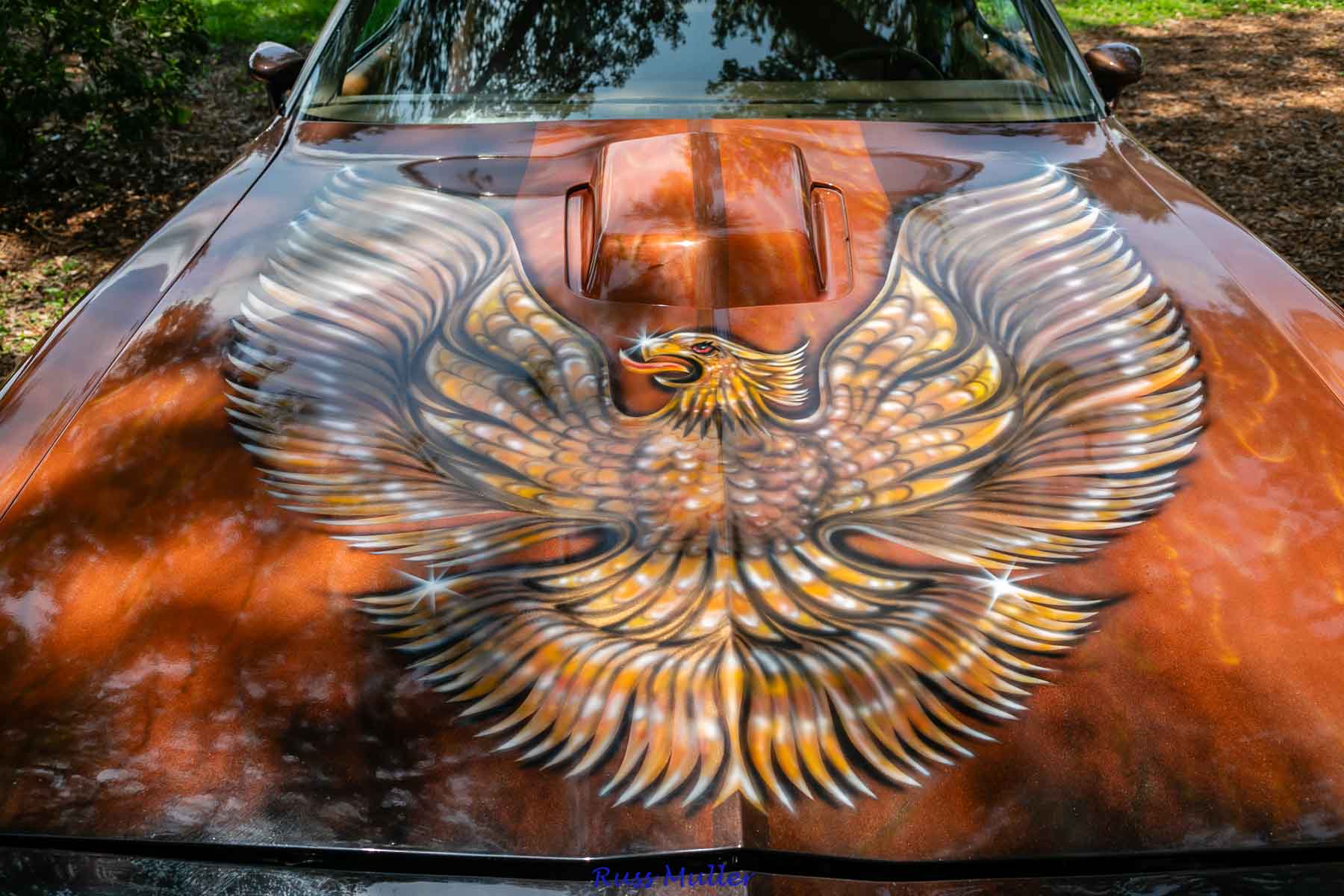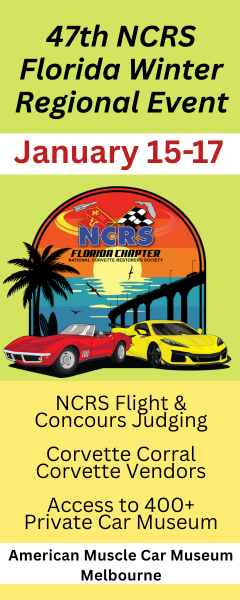Contributed by Russ Muller
A few weeks ago, I was flipping through the channels and came across Smokey and the Bandit. I stopped for a while, watching the movie for probably the 40th time. Once it ended, Smokey and the Bandit II came on and it got me thinking about the screaming chicken on the hood of each Trans Am in each movie and how they were different. Then I started wondering why, and what the history was behind the iconic hood sticker.
I started poking around the all-knowing Internet for more information, and thought I’d share a few of the things I learned, as well as a few photos I’ve taken of the iconic bird in various forms:
The full-size hood bird was an option beginning in 1973. Prior to that, the early 2nd gen T/A sported a much smaller, 12-inch-wide bird.
Beginning in 1976, the hood bird was included on every Special Edition, Anniversary, and Pace Car T/A through 1981, but was still an extra cost option on other Trans Ams.
The original hood bird was 45.5 inches wide and 44.5 inches long and was used through 1978.
There were two hood birds in 1978: The original, and a larger (47 inches wide and 55 inches long) that was used on the Y88 Gold Special Edition. The larger bird was the first to have its head facing the passenger side.
The 1979 10th Anniversary T/A got an even larger bird with wings that extended onto the fenders.
The 1981 Turbo T/A hood bird got a new design to work with the turbo’s offset hood scoop, and its head was once again facing the driver’s side.
Third gen T/As got a smaller hood bird (38 inches wide and 41 inches long), and its head pointed to the passenger side.
The hood bird was discontinued after 1987.
It’s amazing how iconic something as simple as a graphic has become. When Trans Am Depot produced their tribute cars on the 5th gen Camaro platform, they included the iconic bird. To this day, a Trans Am without the optional hood bird looks (to me) like something is missing.















